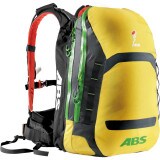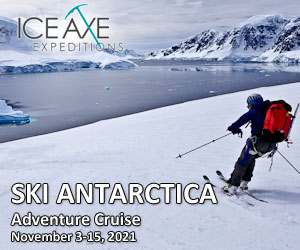Enlightening Avalanche Video
Ideally, the first thing you would do in an Avalanche Level One class would be to go out and have everyone get caught & carried in a big slide. Assuming there were any students left alive afterwards, you’d then have their full and undivided attention. If you can live through it, there is no better teacher than experience, and those that have survived usually have a new-found respect for the power of moving snow.
With that in mind, I’m psyched to see movie production companies like Teton Gravity Research putting videos like this out to the public.
Techy geek sintering, bridging and bonding aside, I thought there were some interesting take-away points to this clip:
1) Once caught, skiing skills are irrelevant. Will Burks, the person caught in this video, is obviously a very strong and accomplished skier, but that doesn’t do much good when you are inverted and getting flushed down the toilet. The idea of “just skiing off the slab” is an absolute, last-ditch, .001% precaution and should never be a primary strategy. Yes, people do it all the time, but there is a big chunk of luck involved with that as you have to be moving substantially faster than the slab and heading off of it. If you are doing 40mph and the avalanche accelerates to 60mph in a matter of seconds, you instantly lose all of your ability to turn and maneuver.
2) Once caught and carried, all bets are off. It’s amazing that Will popped out on top of this slide, but luck often goes the other way and people die in bizarre, tiny little slides as well.
3) Even the best rescue efforts may not be enough. The voice-over at the end of this video says something about having seven people (and a helicopter) right on the scene, but mobilizing them takes a minute, doing a beacon search may take a few minutes, deploying shovels and probes takes time, digging takes time and finding a person’s airway takes time. Five minutes may be survivable assuming you took a deep breath and held it, but the reality is you’ll probably have a mouthful of snow and deflated lungs from the slide setting up around you.
5) Step down slides. This video has great footage of a slide stepping down at the 1:26 mark. All of the avalanche fatalities I’ve been involved with had slides that stepped down and the secondary releases are especially problematic as;
a) they are mid slope, which makes it hard to safely access them for pits
b) the secondary slope may not be sensitive enough to slide just from a skier’s weight, but it will with all of the added weight and impact generated by a slide from above.
I’m glad nobody was hurt in this video and it makes for some great vicarious education.
________________________________
Help support StraightChuter.com and improve your odds of staying on top with a ABS Avalanche Rescue Devices Powder Line 15 Backpack from Backcountry.com. Click on the photo below…
Category: Avalanche










Will Burks has more lives than even you Andrew.
That step-down factor really deserves more attention than it gets.